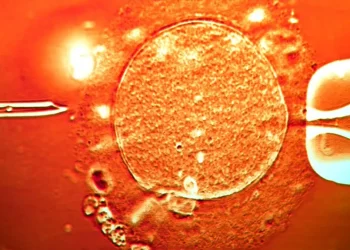Breakthrough Study Reveals Key Cause of Huntington’s Disease
Scientists have made a groundbreaking discovery about Huntington’s disease, a fatal hereditary brain disorder. This research sheds new light on why the disease, caused by a known genetic mutation, remains dormant for decades before wreaking havoc on nerve cells in the brain.
The Mystery of Delayed Onset
Huntington’s disease is linked to a mutation in a specific gene. Despite being present from birth, the disorder typically doesn’t manifest until ages 30 to 50, leaving researchers puzzled.
A recent study reveals that the mutation is initially harmless but gradually worsens over time. As the mutation grows, it eventually reaches a critical threshold, producing toxic proteins that kill brain cells.
Dr. Mark Mehler, director of the Institute for Brain Disorders and Neural Regeneration at Albert Einstein College of Medicine, called the research a “landmark study,” stating it resolves long-standing questions in the field.
Symptoms and Progression
Huntington’s disease affects movement, cognition, and behavior, leading to symptoms such as:
- Involuntary movements
- Unsteady gait
- Personality changes
- Impaired judgment
The condition worsens over 10 to 25 years, eventually becoming fatal.
The Study: Key Findings
The research, conducted by scientists at the Broad Institute of MIT and Harvard, McLean Hospital, and Harvard Medical School, analyzed brain tissue from 53 individuals with Huntington’s and 50 without it. The team focused on the gene mutation, which involves a repeated three-letter DNA sequence, CAG.
Key findings include:
- Normal vs. Mutated DNA: In healthy individuals, the CAG sequence repeats 15–35 times. In Huntington’s patients, it repeats 40 or more times.
- DNA Expansion Over Time: Mutated DNA expands slowly during childhood but accelerates as it grows past 80 repeats. At around 150 repeats, it becomes toxic, causing neurons to die.
- Critical Threshold: The severity and onset age of Huntington’s are linked to the number of repeats. The longer the sequence, the earlier symptoms appear.
“These findings were really surprising, even to us,” said Steve McCarroll, co-senior author of the study published in Cell.
Challenges in the Field
Researchers noted initial skepticism from peers since previous studies suggested that expansions of 30–100 CAG repeats were necessary—but not sufficient—to cause Huntington’s. This study confirms that only expansions exceeding 150 CAGs lead to the disease.
Implications for Treatment
Huntington’s disease currently has no cure, and treatments focus on managing symptoms. Experimental drugs targeting the protein produced by the mutated gene have underperformed in trials, possibly because only a small number of cells produce the toxic protein at a time.
Researchers now believe targeting DNA repeat expansion may offer a better approach. Slowing or stopping these expansions could delay or prevent the disease.
“Many companies are starting or expanding programs to try to do this,” said McCarroll.
Hope for the Future
The discovery provides a roadmap for new therapies aimed at addressing the root cause of Huntington’s. While challenges remain, the findings mark a significant step forward in understanding and potentially treating this devastating disease, which affects an estimated 41,000 Americans.
This article was rewritten by JournosNews.com based on verified reporting from trusted sources. The content has been independently reviewed, fact-checked, and edited for accuracy, neutrality, tone, and global readability in accordance with Google News and AdSense standards.
All opinions, quotes, or statements from contributors, experts, or sourced organizations do not necessarily reflect the views of JournosNews.com. JournosNews.com maintains full editorial independence from any external funders, sponsors, or organizations.
Stay informed with JournosNews.com — your trusted source for verified global reporting and in-depth analysis. Follow us on Google News, BlueSky, and X for real-time updates.














